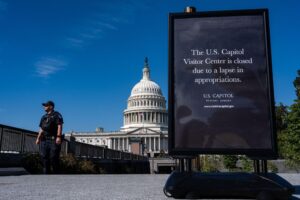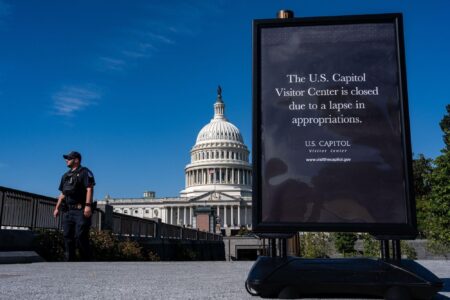The Rising Debate Over the Future of the U.S. Department of Education
Political Movements Challenging Federal Education Authority
In recent years, a growing political movement has emerged advocating for a drastic reduction or even the complete elimination of the U.S. Department of Education. This trend is part of a larger ideological struggle concerning the extent of federal involvement in education policy and funding. Advocates for this shift argue that decentralizing control would empower parents and local school boards to customize education more effectively, free from federal bureaucracy. However, this push has ignited fierce discussions about the potential risks to educational equity, consistent funding, and accountability across the country.
Key tactics driving this movement include:
- Legislative efforts: Proposing laws aimed at cutting the department’s budget or redefining its mission.
- Regulatory easing: Weakening federal mandates related to curriculum standards and civil rights enforcement.
- Media campaigns: Portraying the department as an unnecessary federal intrusion into local education.
| Group | Position | Main Concern |
|---|---|---|
| State Governors | Advocate for state and local control | Excessive federal regulation |
| Education Reform Organizations | Support policy decentralization | Greater curriculum flexibility and school choice |
| Teachers’ Unions | Resist department downsizing | Protecting jobs and stable funding |
Influential Actors and Their Approaches in the Campaign Against Federal Education Oversight
The campaign to curtail the Department of Education’s influence is spearheaded by a coalition of conservative think tanks, lawmakers, and advocacy groups. Notable organizations such as the Heritage Foundation and the American Legislative Exchange Council (ALEC) have been instrumental in drafting model legislation aimed at shifting educational governance back to the states. Meanwhile, certain members of Congress have introduced bills to reduce the department’s budget and authority, framing their initiatives as efforts to enhance parental control and educational freedom.
Prominent strategies include:
- Lobbying state governments to enact laws promoting school choice and local control.
- Launching public relations efforts to depict the department as an overbearing federal entity.
- Mobilizing grassroots supporters to influence school board decisions and public opinion.
- Challenging the department’s legal authority and funding mechanisms through court cases.
| Entity | Function | Primary Method |
|---|---|---|
| Heritage Foundation | Policy formulation | Drafting state-level legislation |
| ALEC | Legislative networking | State lobbying efforts |
| Key Congressional Members | Federal policymaking | Budgetary constraints |
| Advocacy Groups | Public engagement | Media and grassroots campaigns |
Consequences for Public Schools and Student Support Systems Nationwide
The movement to dismantle or diminish the Department of Education poses significant challenges for public schools and the services they provide to students. Federal funding that supports essential programs—especially for low-income and special needs students—is at risk, potentially forcing school districts to reduce services or rely on inconsistent local funding sources. Without federal oversight, disparities between wealthy and underfunded districts could widen, as national standards and accountability frameworks may lose their enforceability.
Examples of critical student services currently supported by the department include:
- Funding and compliance for special education programs
- Free and reduced-price meal initiatives
- Student loan programs and financial literacy education
- Title I funding targeting schools serving economically disadvantaged populations
| Service | Current Role | Potential Impact of Cuts |
|---|---|---|
| Special Education | Stable federal funding and oversight | Funding reductions and uneven service quality |
| School Nutrition | Provides meals to millions daily | Funding losses leading to increased food insecurity |
| Student Loan Programs | Federal repayment and forgiveness options | Loss of protections and more complex repayment processes |
Strategies to Safeguard Federal Support and Promote Educational Fairness
To ensure continued federal support for education, it is vital for stakeholders to advocate strategically for the Department of Education’s essential role in maintaining nationwide standards and fairness. Emphasizing equitable funding policies is crucial to guarantee that resources reach schools serving marginalized and economically disadvantaged students. Building collaborative partnerships between federal agencies and local districts can help tailor solutions to diverse educational needs while preserving necessary federal oversight.
Transparency and accountability in funding allocation are key to advancing educational equity. Implementing data-driven monitoring systems can identify disparities and inform timely policy adjustments. Below are expert-endorsed recommendations to close funding gaps and enhance access:
| Recommendation | Expected Outcome | Priority Level |
|---|---|---|
| Boost Title I Funding | Strengthens support for low-income schools | High |
| Enhance Accountability Systems | Ensures fair and effective use of funds | Medium |
| Expand Special Education Access | Meets diverse learner requirements | High |
| Improve Teacher Training | Raises overall education quality | Medium |
- Invest in digital infrastructure to bridge the technology gap affecting both rural and urban schools.
- Encourage community involvement to ensure policies reflect local priorities and challenges.
- Protect federal education mandates that uphold access and prevent erosion of civil rights protections.
Conclusion: The Future of Federal Education Policy
The ongoing debate surrounding the Department of Education’s future carries profound implications for policymakers, educators, and millions of students across the United States. Efforts to dismantle or significantly reform the agency highlight broader tensions about federal roles in education and the trajectory of public policy. The outcomes of this debate will not only redefine the department’s structure but also shape the educational landscape for generations to come. Coverage and analysis of this evolving story will continue to be essential as developments unfold.







